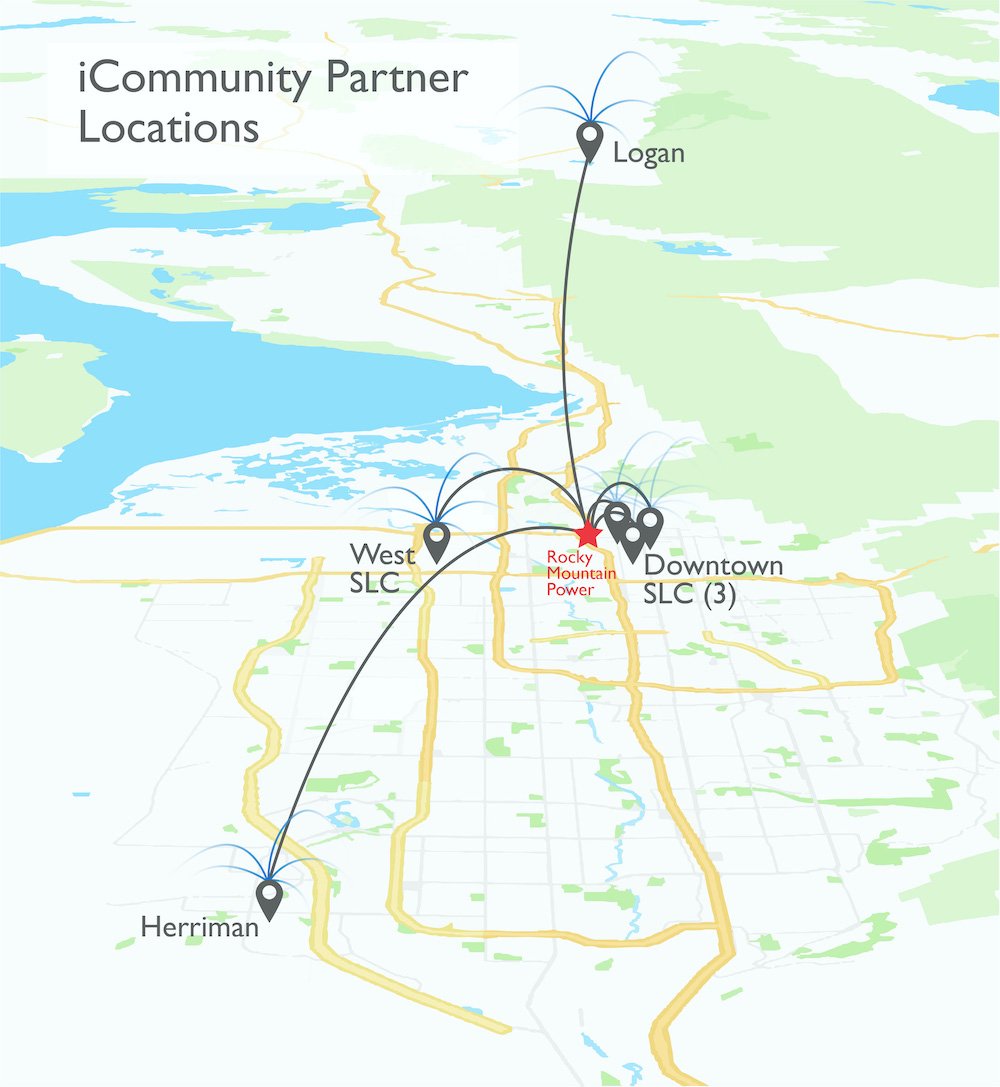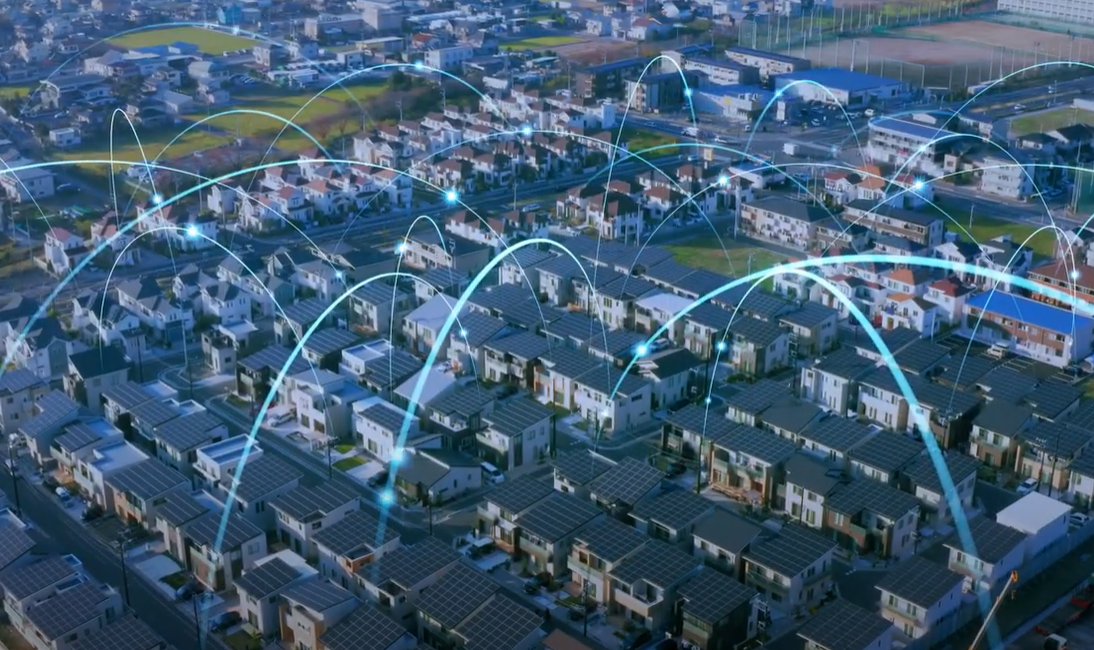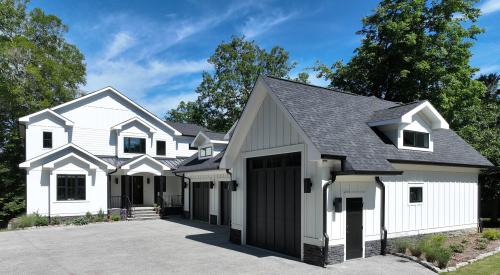Our buildings are rapacious energy eaters. The 130 million homes and other buildings in the US consume about 40% of the nation’s energy and 75% of its electricity.
While renewable energy helps balance electricity demand and supply, it’s not enough on its own. Grid operators need to optimize their use of solar and wind energy—making the most of it when the sun shines and the wind blows, and conserving it when they don’t.
That’s where connected communities come in.
Traditional buildings have one-way communications with the electrical grid: An occupant demands more power, the grid supplies it.
By contrast, connected communities leverage the two-way communications of grid-interactive efficient buildings (GEBs). GEBs use smart controls and sensors to interact with the grid and respond to what it tells them—like the availability of renewable energy sources or the price of electricity. So, for example, a GEB could draw less power from the grid at high-demand times or use more renewable energy when solar is available.
"This capability will reduce energy use during periods of peak demand, which in turn lowers electricity bills for consumers and reduces overall grid system costs," Kelly Speakes-Backman, acting assistant secretary, principal deputy assistant secretary, Energy Efficiency and Renewable Energy (EERE), Department of Energy (DOE), said in a recent press call.
GEBs could save up to $18 billion per year in power system costs, according to a recent DOE study. They also could cut 80 million tons of carbon emissions each year—more than the annual emissions of 17 million cars.
Connected communities and GEBs can involve a range of technologies—from batteries that store renewable energy, to efficient water heaters that can heat up when solar energy is abundant, to well-insulated homes that can be cooled at non-peak times and then maintain their comfortable temperatures longer.
DEPARTMENT OF ENERGY TESTS GRID-INTERACTIVE EFFICIENT BUILDING TECHNOLOGIES
Recently, the DOE announced $61 million for 10 pilot projects that will deploy GEB technologies in real-world connected communities.
"We want to do these demonstrations to learn from actually doing, and then make that information available to others," Dale Hoffmeyer, connected communities technology manager, Building Technologies Office, EERE, said in a phone interview. “We need to focus not just on technologies within specific buildings and how they interact with the grid, but on groups of buildings and their distributed energy resources like solar, wind, and battery storage.”
One DOE-funded project, led by the Post Road Foundation, a nonprofit focused on sustainable infrastructure, will test a technology called the Transactive Energy Service System (TESS), developed by Stanford’s SLAC National Accelerator Laboratory.
‘We hope to demonstrate that the benefits of these technologies are going to extend to every business and every household in America.’ — Kelly Speakes-Backman, Acting Assistant Secretary and Principal Deputy Secretary for Energy Efficiency and Renewable Energy at the U.S. Department of Energy
The five-year initiative signals an innovative break from traditional energy usage, according to Seth Hoedl, president and chief science officer, Post Road Foundation. “In most parts of the country, loads are completely inflexible and don’t respond to any signals other than what the building owner likes. So you turn the thermostat up or down, and the furnace or heat pump responds to that,” Hoedl said in a phone interview.
TESS involves interactive tech. In 100 to 200 buildings in at least three rural communities in Maine and New Hampshire, TESS will connect devices such as electric heat pumps and electric vehicle batteries so they can communicate with one another in real time. If a participating building’s occupants approve, then TESS would allow their devices to automatically draw less power from the grid at high-peak, high-cost periods—for instance, by adjusting the thermostat when the grid is stressed.
Another project, led by solar company SunPower, will build two communities of new, all-electric homes in California, all of which meet the DOE’s Zero Energy Ready Homes criteria. One development will have solar batteries in the homes; the other will have community-wide battery storage. SunPower will examine how they each help increase solar energy use and reduce overall energy consumption.
And in Utah, Rocky Mountain Power, a division of PacifiCorp, will connect a diverse community of all-electric buildings in the Salt Lake City area to optimize and stabilize the grid, use more renewables, and lower costs. The initiative aligns with PacifiCorp’s goal of achieving a 74% reduction in greenhouse emissions from 2005 levels by 2030.

“We see connected communities as the grid of the future,” James Campbell, Rocky Mountain Power’s director of innovation and sustainability policy, said on the press call.
Ultimately, the DOE intends to show the far-reaching benefits of GEB and connected communities: “We hope to demonstrate that the benefits of these technologies are going to extend to every business and every household in America,” Speakes-Backman said.
The DOE’s Connected Communities site will share the projects’ results, which Lawrence Berkeley National Laboratory will help synthesize.















